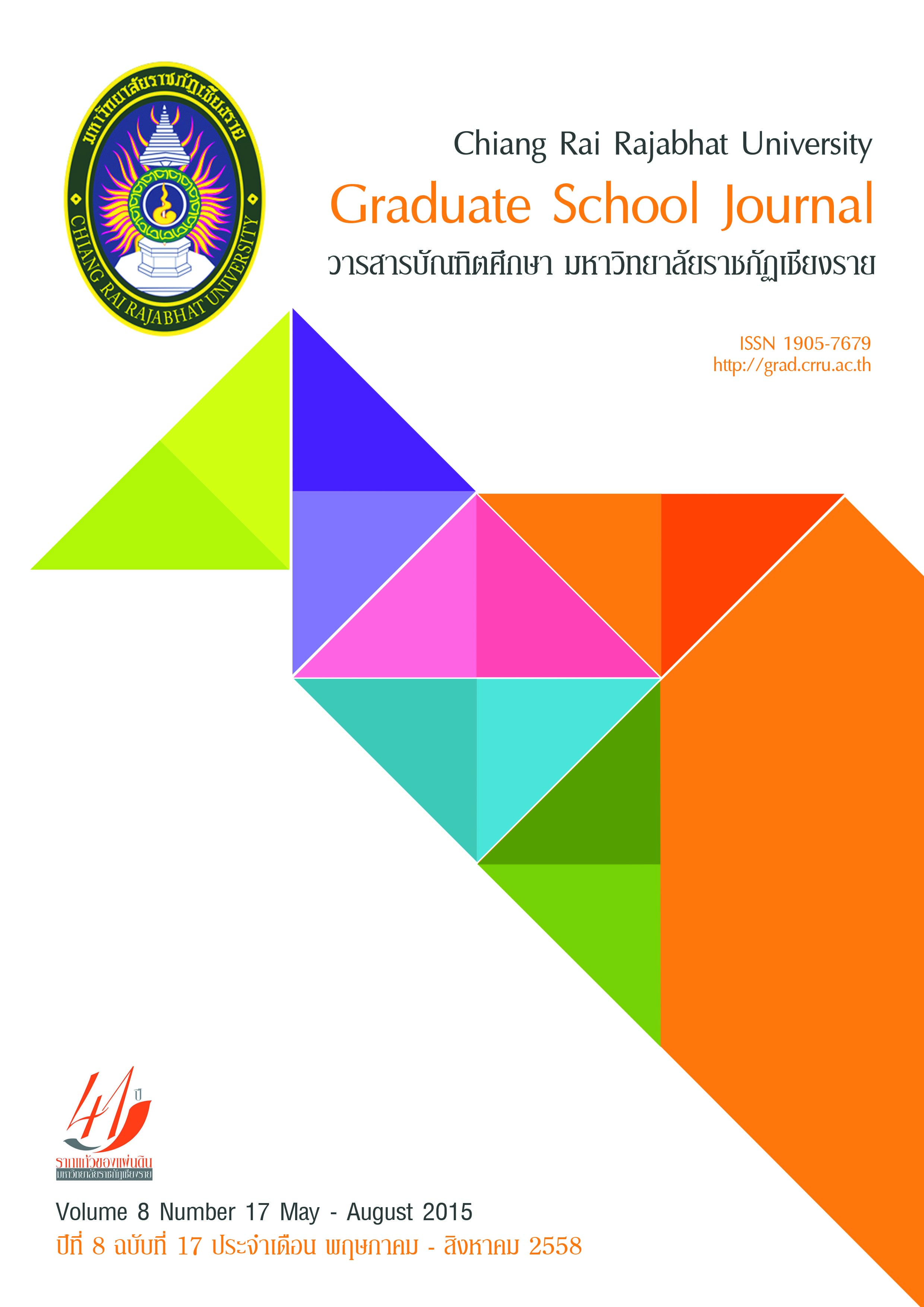การเปรียบเทียบผลสัมฤทธิ์ทางการเรียน ความคงทนของการเรียนรู้ และเจตคติต่อคณิตศาสตร์ของ นักเรียนชั้นมัธยมศึกษาปีที่ 3 ระหว่างการจัดกิจกรรมการเรียนรู้แบบผังขั้นบันไดร่วมกับ การแก้โจทย์ปัญหาของโพลยากับการจัดกิจกรรมการเรียนรู้แบบปกติ
Main Article Content
บทคัดย่อ
A Comparison of Learning Achievement, Retention of Learning, and Attitude towards Mathematics of Mathayomsuksa 3 Students between Learning Management by Using Time Ladder Map with Polya s’ Problem Solving Steps and Conventional Method
The purpose of this research was to compare learning achievement, retention of learning, and attitude towards Mathematics of Mathayomsuksa 3 students during the learning management by using time ladder map with Polya s’ problem solving steps and conventionalmethod. The population of this study consisted of 3 classrooms of Mathayomsuksa 3 students at Maechanwitthayakhom school under The Secondary Educational Service Area Office 36. The research instruments drawn for this study were learning plan by using time ladder map and Polya s’ problem solving stepslearning management, the achievement test, and the attitude test towards Mathematics. The data were analyzed by using mean, standard deviation and t- test. The results of the study were found that the average score of the learning achievement of studentswho learnt by using time ladder map and Polya s’ problem solving steps was higher than studentswho learnt by conventional method at the statistically significant level of .05. There were no differences on the retention of learning and the attitude towards Mathematic between the students who learnt by using time ladder map and Polya s’ problem solving steps and the studentswho learnt by conventional method.
Article Details
บทความที่ได้รับการตีพิมพ์เป็นลิขสิทธิ์ของวารสารมหาวิทยาลัยราชภัฎเชียงราย
ข้อความที่ปรากฏในบทความแต่ละเรื่องในวารสารวิชาการเล่มนี้เป็นความคิดเห็นส่วนตัวของผู้เขียนแต่ละท่านไม่เกี่ยวข้องกับมหาวิทยาลัยราชภัฎเชียงราย และคณาจารย์ท่านอื่นๆในมหาวิทยาลัยฯ แต่อย่างใด ความรับผิดชอบองค์ประกอบทั้งหมดของบทความแต่ละเรื่องเป็นของผู้เขียนแต่ละท่าน หากมีความผิดพลาดใดๆ ผู้เขียนแต่ละท่านจะรับผิดชอบบทความของตนเองแต่ผู้เดียว


